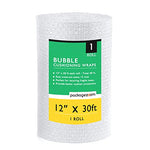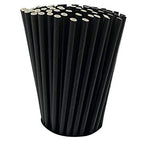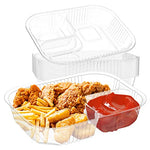You have no items in your shopping cart.
Plastic packaging has become an essential part of modern life. From food to electronics, nearly everything we use comes in some form of plastic packaging. However, the increasing awareness of environmental issues has led to a demand for more sustainable packaging solutions. This is where HDPE bags come in. HDPE (High-Density Polyethylene) bags are a type of plastic packaging that is durable, flexible, and recyclable. In this article, we will take a comprehensive look at HDPE bags, including their benefits, uses, and manufacturing process.
HDPE Bags
HDPE bags are made from a thermoplastic polymer that is derived from petroleum. This material is commonly used in the production of plastic bottles, toys, and pipes. HDPE bags are strong, lightweight, and flexible, making them an ideal choice for a wide range of applications.
Benefits of HDPE Bags
- Durable: HDPE bags are resistant to tears, punctures, and other forms of damage, making them ideal for packaging heavy or bulky items.
- Lightweight: HDPE bags are lightweight, which makes them easy to transport and reduces shipping costs.
- Recyclable: HDPE bags are fully recyclable and can be reused to make new plastic products, reducing the environmental impact of plastic waste.
- Versatile: HDPE bags come in a variety of sizes, shapes, and colors, making them suitable for a wide range of applications.
- Cost-effective: HDPE bags are relatively inexpensive compared to other types of plastic packaging, making them a cost-effective solution for businesses.
Uses of HDPE Bags
HDPE bags have a wide range of uses, including:
- Retail packaging: HDPE bags are commonly used for retail packaging, such as grocery bags, shopping bags, and gift bags.
- Industrial packaging: HDPE bags are also used for industrial packaging, such as wrapping materials, protective covers, and liners.
- Healthcare packaging: HDPE bags are used in healthcare for the packaging of medicines, medical devices, and other healthcare products.
- Agricultural packaging: HDPE bags are used in agriculture for the packaging of fertilizers, pesticides, and animal feed.
Manufacturing Process of HDPE Bags
The manufacturing process of HDPE bags involves the following steps:
- Extrusion: The first step in the manufacturing process is extrusion, which involves melting the HDPE resin and forming it into a flat sheet.
- Printing: The flat sheet is then printed with the desired design or logo using a printing press.
- Cutting: The printed sheet is then cut into the desired size and shape using a cutting machine.
- Sealing: The edges of the cut sheet are sealed together using heat to form a bag.
- Quality Control: The finished bags are inspected for defects and quality control measures are taken to ensure that they meet the required standards.
Frequently Asked Questions (FAQs)
Q1. What does HDPE stand for?
HDPE stands for High-Density Polyethylene.
Q2. Are HDPE bags recyclable?
Yes, HDPE bags are fully recyclable and can be reused to make new plastic products.
Q3. What is the difference between HDPE and LDPE bags?
HDPE bags are made from high-density polyethylene, while LDPE bags are made from low-density polyethylene. HDPE bags are stronger and more durable than LDPE bags, makingthem a better choice for heavy-duty applications. LDPE bags are more flexible and have a higher clarity, which makes them a better choice for light-duty applications. HDPE bags also have a higher melting point, which makes them more resistant to heat. In addition, HDPE bags are more environmentally friendly than LDPE bags, as they are easier to recycle and produce less waste during the manufacturing process. Overall, the choice between HDPE and LDPE bags will depend on the specific application and requirements of the packaging.
Q4. Can HDPE bags be used for food packaging?
Yes, HDPE bags are safe for food packaging and are commonly used for packaging food items such as bread, fruits, and vegetables.
Q5. How can I dispose of HDPE bags responsibly?
HDPE bags should be recycled whenever possible. If recycling is not available, they can be disposed of in the regular trash. It is important not to litter or dispose of plastic bags in the environment, as they can harm wildlife and ecosystems.
Q6. How can businesses switch to using HDPE bags?
Businesses can switch to using HDPE bags by finding a supplier that offers eco-friendly packaging solutions. It is also important to educate employees and customers about the benefits of using sustainable packaging and encourage them to recycle.
Conclusion
HDPE bags are a versatile and sustainable packaging solution that offers many benefits to businesses and consumers alike. Their durability, lightweight, and recyclability make them an ideal choice for a wide range of applications. As awareness of environmental issues continues to grow, more businesses are turning to eco-friendly packaging solutions like HDPE bags. By making the switch to sustainable packaging, businesses can reduce their environmental impact and contribute to a healthier planet.








